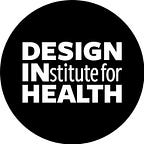Design sees the world as it is.
By Stacey Chang and Kate Payne
Let’s begin with a collective admission of guilt. Those of us who practice Design, and apply it to challenges in health and health care, are not quite the unicorns our self-identities so desperately want to be. Designers have been working in healthcare for decades.
While it’s true that the sophistication of those interventions has grown over time — from design of medical devices, to communications and interfaces, to design of spaces and services and protocols — it’s not new territory. In increasingly challenging scenarios, we’ve applied the basic tenets of design, such as:
- Seeing humans as they actually are — so that we can address the unspoken needs they can’t or won’t reveal
- Creative imagining of new offerings to solve those needs
- Learning through iteration and failure to arrive at something truly useful
- Inspiring and infusing a learning culture within the risk-averse arena of health
But why, with all this effort, and plenty of examples of individual success, have we failed to fundamentally shift how health is produced and perpetuated in the systems we endure? Why do all the statistics show our health is worsening in spite of greater expenditure? That growth in life expectancy and quality of life is diminishing? That in the context of a pandemic, we’ve laid bare how ineffectual we actually are at addressing the core issues that make us unwell?
Is it possible that we’re just working at the edges of the dysfunction? Is it possible that Design, in its elemental simplicity, is not up to the task of shifting the social systems of care that have grown entangled from a century of increasing complexity and competing incentives?
If Design sees humans as they actually are, can it also see the world as it actually is?
Our systems of care are not singularly driven by mission, and they haven’t been for a long while. The health care-industrial complex is big business, maybe the biggest business. Embedded within are motivations skewed by profit, power, and fear. But it also consists of individuals, who when they doff their branded allegiance, are driven by a motivation for impact on the human condition.
It might then be necessary for Design to embrace other fields of knowledge and remake its approach by developing a more expansive toolbox that respects what drives the actual behavior in those systems of care. Design can grow its embrace, instead of remaining singularly arrogant, in order to realize greater impact.
We recognize that these social systems encompass elements of commerce, community, and regulation, and there is no one entity with authority over it all. Thus, the system’s behavior can’t be prescribed, a nuanced appreciation of all the variables is necessary, and a test-and-learn approach might be the best chance we have to make real change.
We can partner with systems and futures thinking, with business and finance strategy, with politics and policy, with community-building, to invert these models and practices, targeting interventions that prioritize the groups of humans that comprise these systems.
We can co-create, and sometimes compel, but always with benevolence.
It means, fundamentally, we have to do away with the designer’s myth about the beginner’s eye.
Naïveté has no leverage in systems as complex as these — being informed about the system’s inbuilt incentives is necessary to make real progress. In addition to asking “why?” in order to better understand humans needs, we also have to ask “why not?” to challenge legacy norms.
Design has always been able to imagine the world that we wish to have. Can it also see the world as it is? Can it muster the skills, capability, and courage to bridge what we have now with that better future? We think so.
